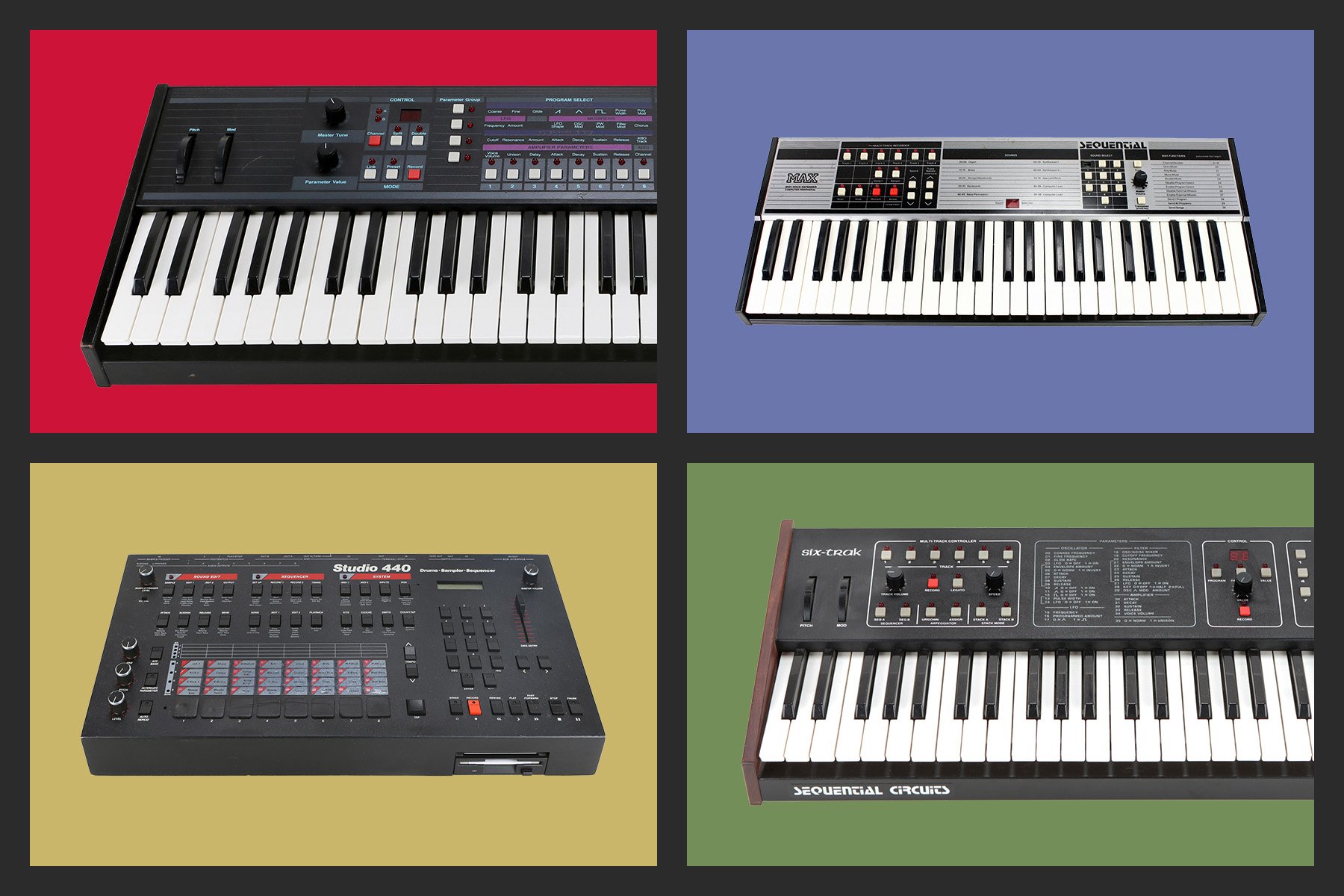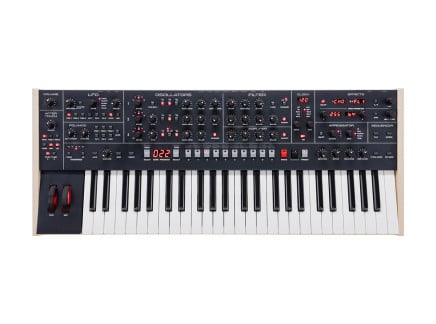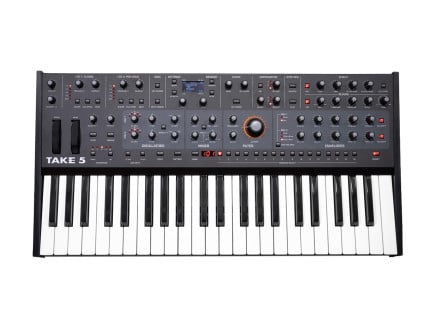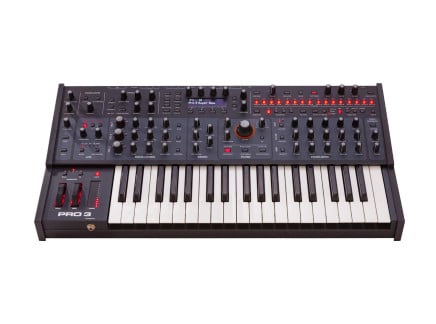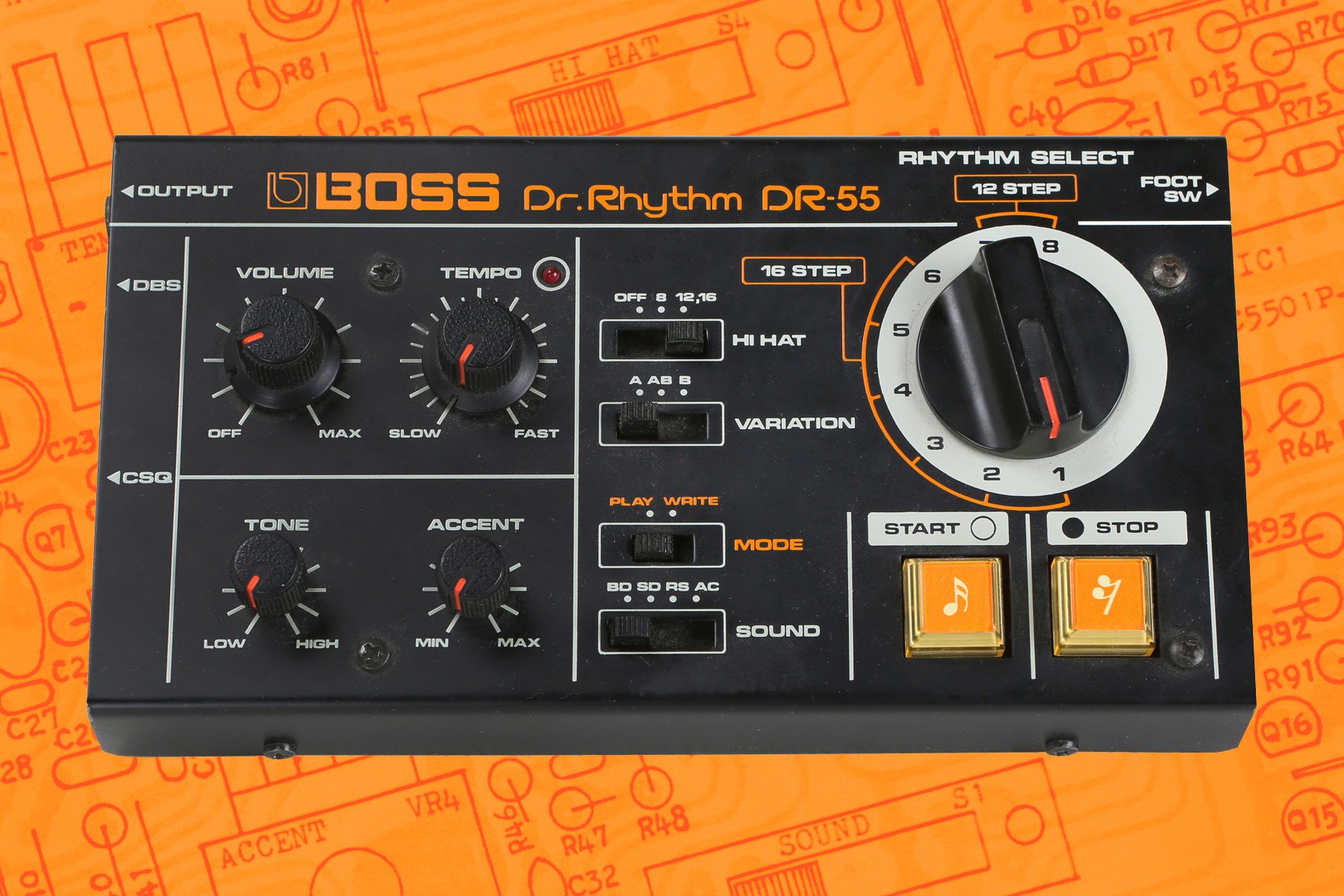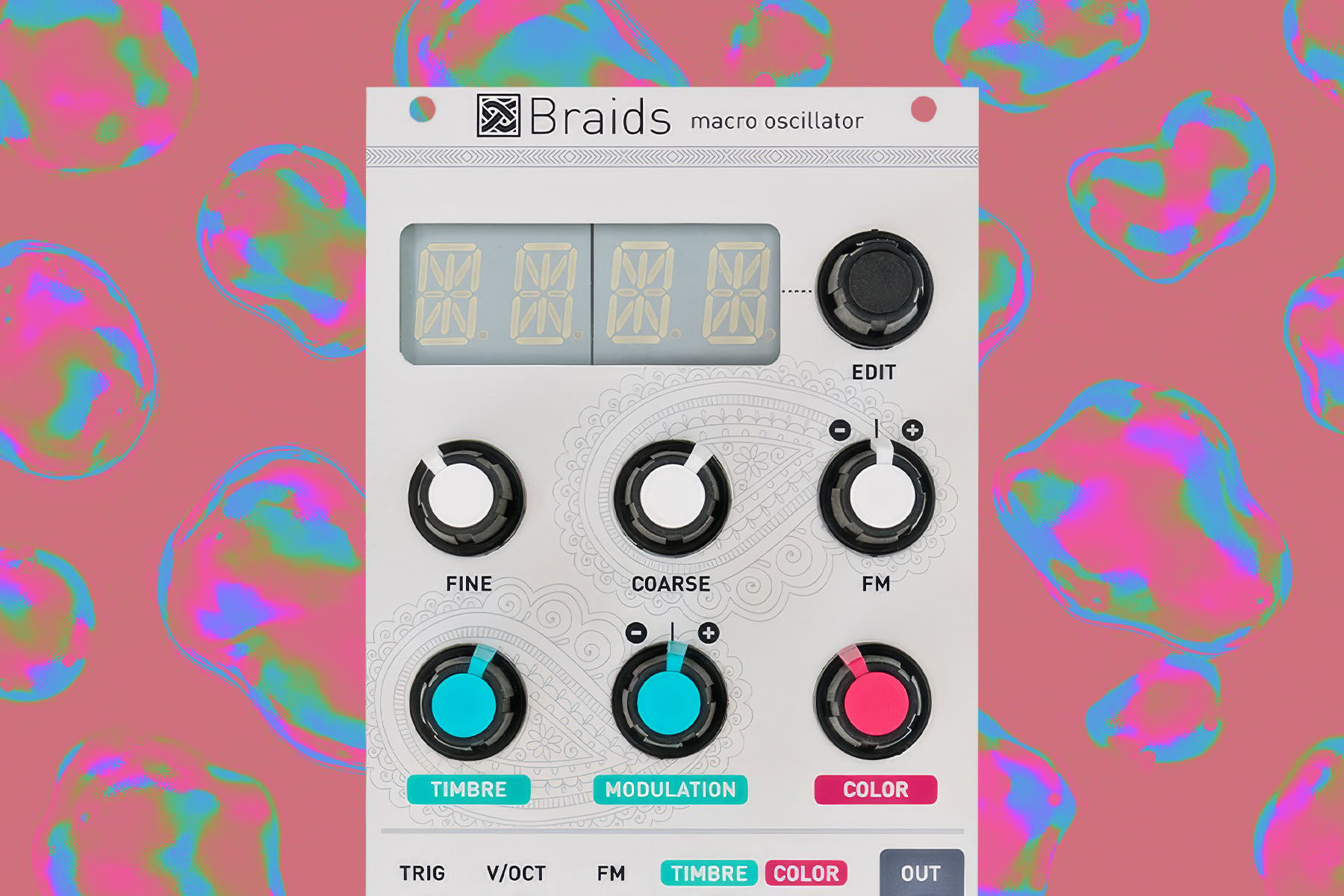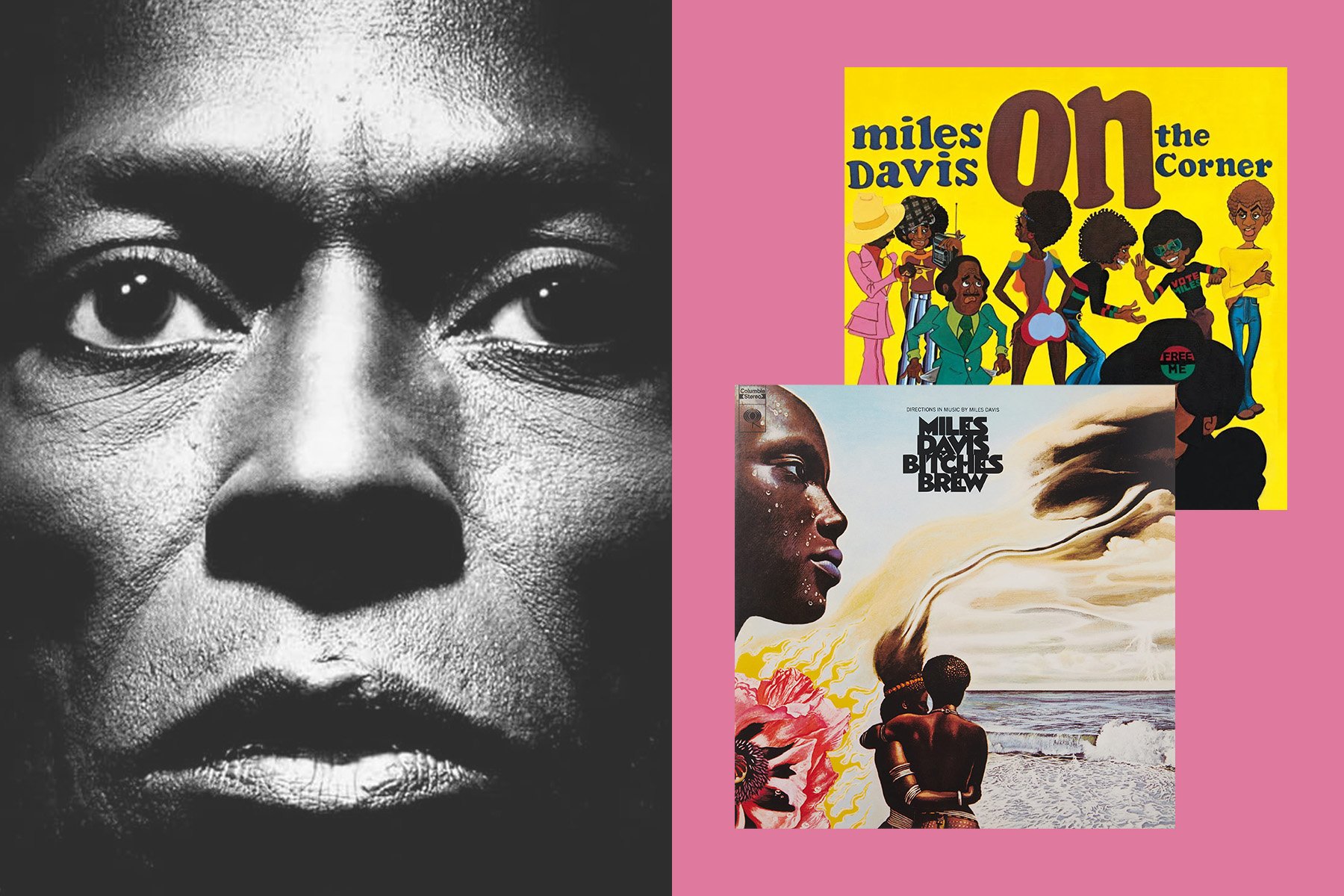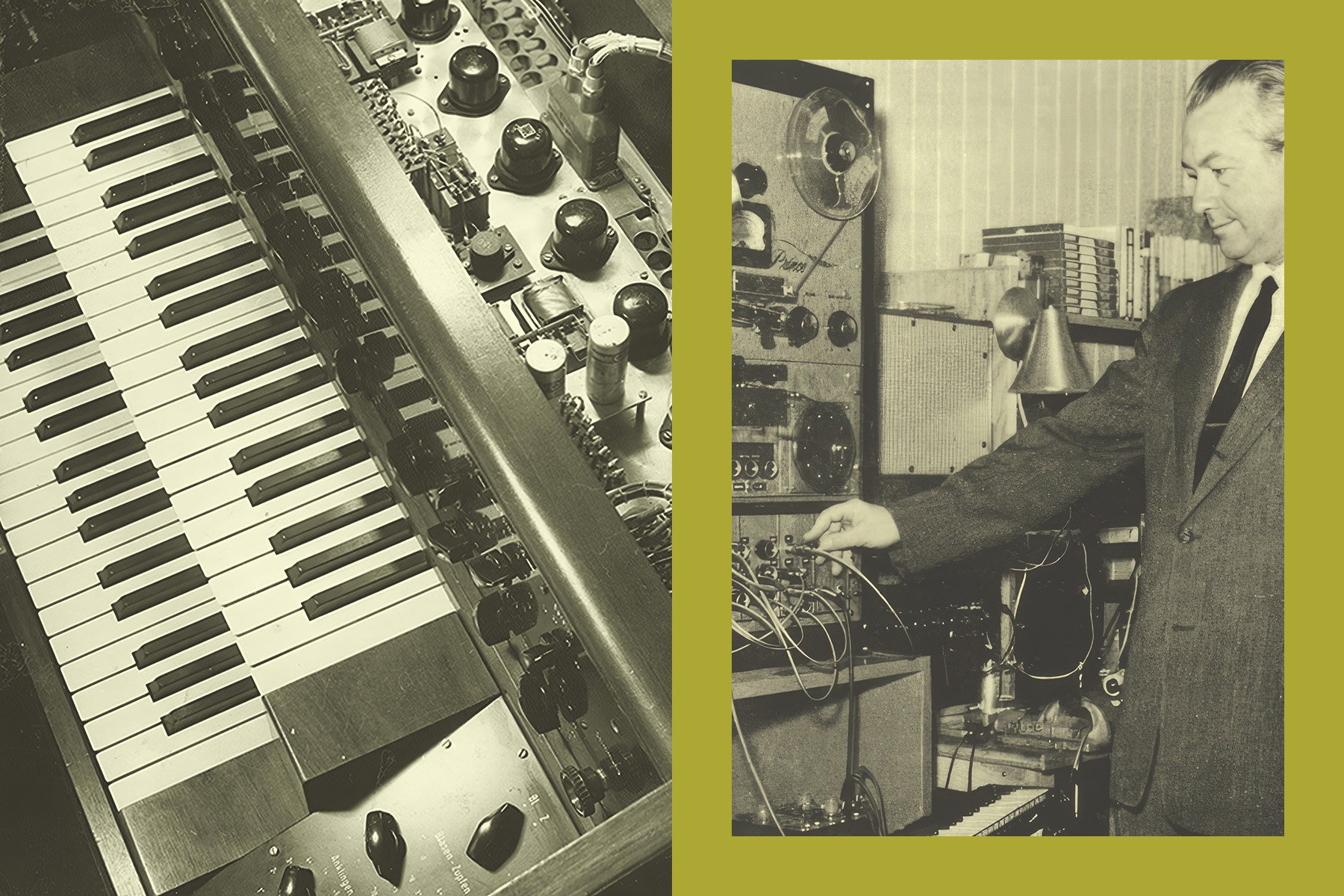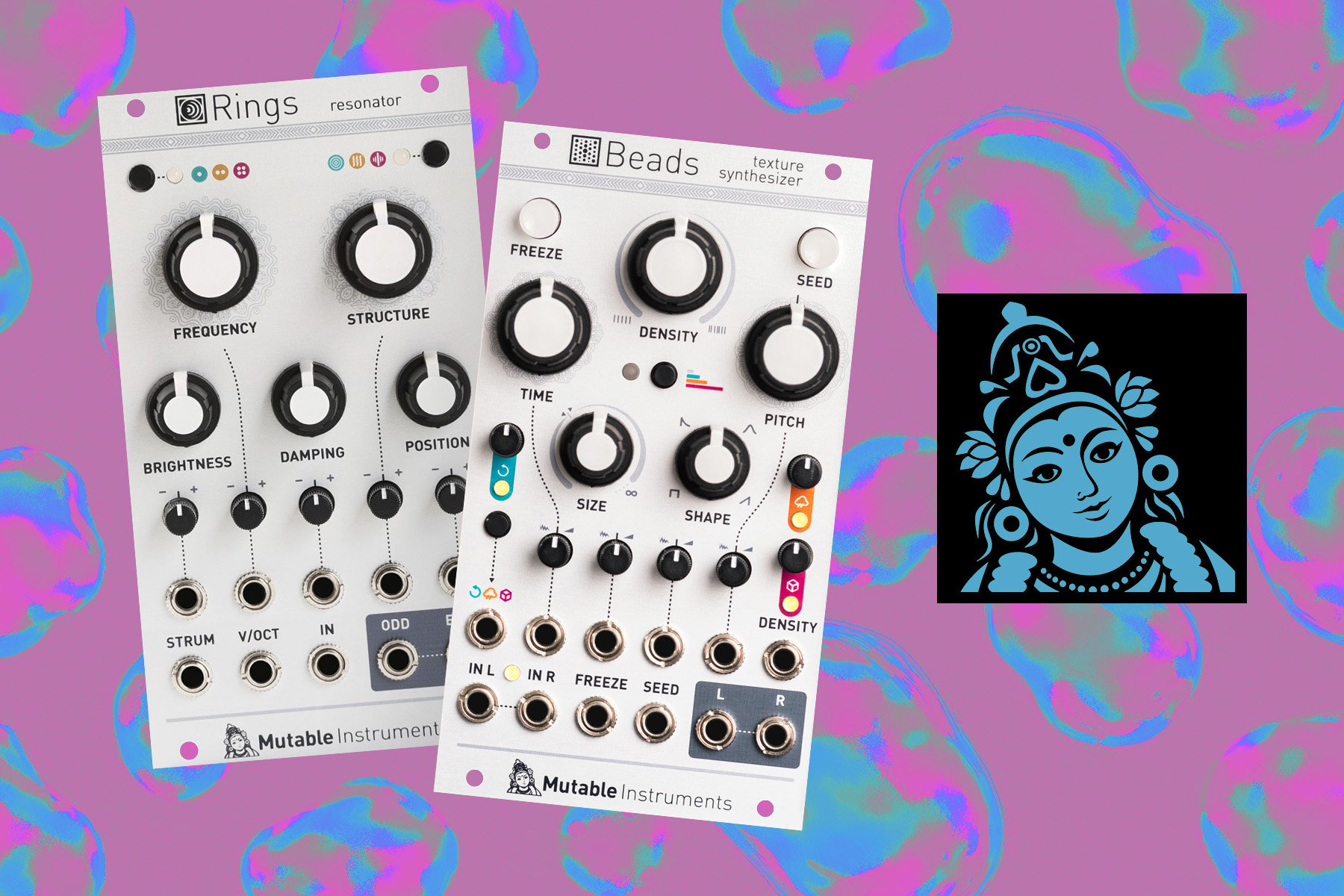The Sequential Circuits Prophet series is one of the most popular analog synthesizer lines of all time. Released during a frantic time in the technology when juggernauts like Moog, ARP, Korg, Roland, and Casio were all throwing elbows for market share, Prophets are the most popular instrument models from Sequential Circuits. The Prophet-5, one of the first truly practical commercial polysynths, made a name for Sequential Circuits and Dave Smith in a truly dynamic time in the music industry.
But, Sequential Circuits released a lot of other instruments that never quite got the recognition they deserve. Some focus more on synth sounds, others on evolving sequencer technology, but there’s no disputing Sequential Circuits's track record of innovation in the late 1970s through the mid-80s. Here are some of our favorite examples.
Model 800
Released in 1975, this was one of Sequential's earliest products. Quite aptly, it was a sequencer.

This 256-event sequencer resembles a piece of outboard gear more than an instrument. It’s thought of as being the first Sequential Circuits product, and one of the first commercial pieces of electronic music equipment to feature analog and digital technology. Sixteen toggle switches enable “cells” that hold up to 16 events each. They’re loaded through CV from an external keyboard and programmed over a 5-octave range. There was no internal memory, though it’s rumored that a battery backup modification could provide a rudimentary form of memory storage.
The Model 800 blazed the trail for sequencers with more sophisticated capabilities—something that set the company’s products apart from their competitors from the very beginning.
Pro-One
In 1981, a few years after the release of the game-changing Prophet-5 polysynth, Sequential released the Pro-One—a monophonic analog synth popular because of its low price point, thick sounds, and versatile feature set. It used a 32-note integrated keyboard and added a built-in sequencer, which was a big step up from the Model 800.
It was released around the same time as the Moog Prodigy and Roland SH-101, and offers a similar layout as these competitors. The Pro-One is essentially a monophonic Prophet-5 packed into an affordable and compact enclosure.
Two VCOs, a 4-pole low-pass filter, two ADSR envelopes, and a three-octave keyboard allow for a low end that punches and unique sounds that can only come from an analog synth. Despite the robust control set, it’s fairly intuitive to use and appeals to many novice and experienced synth users.
Around 10,000 were produced, so they're not too difficult to find—but because they are so desirable, they can still command high prices on the used market. It’s one of the most fleshed-out and best-loved models in the Sequential Circuits lineup.
Fugue
Resembling a Prophet in looks and layout, the Fugue was built by Italian organ maker Siel and was produced between 1981 and 1985. When Sequential Circuits was looking to add a compact monophonic/polyphonic synth to their lineup, they commissioned Siel to do it because they were still a small company and didn’t have the resources to build one of their own.
It’s a unique hybrid-style synth with monophonic analog and polyphonic string sections with rear-panel outputs for each section. It combines two popular Siel synths—the Mono and Orchestra—into one innovative and expansive unit. The Poly section has full polyphony and runs on predetermined presets (Piano, Organ, Strings, and Brass) that can be combined via four push buttons. Polyphony is maintained regardless of how many instruments are active, and “Poly Effect” adds chorusing and VCF filtering.
The Mono section is an independent mono synth with a waveform section with 10 preset and variable waveforms—20 in total. All waveforms have multiple ways to edit the sounds through knobs and sliders. Solo/Mono mode has a self-oscillating filter, full ADSR control over the filter envelope, and resonance and frequency sliders. A joystick changes pitch in the Mono section, and volume and expression pedal inputs let players articulate—though there are no CV or gate inputs.
Where the Fugue really shows its utility is in with the keyboard split function. You can split the 49 keys in the middle and play chords with the left hand and leads with the right or mix it up any way you’d like. A level slider controls the amount of split between the sections. So, don't be fooled by the smaller keybed and low effects section count—there is a lot that you can do with the Fugue.
Prelude
1982’s Prelude is a compact, 4-section orchestral synthesizer with organ, piano, string, and brass sections. All 49 keys can sound at the same time, meaning it has full 49-note polyphony, but it can only play two sections at a time. Editing and storage functions are quite limited, but it does have an onboard chorus, flanger, and a 7-band EQ.
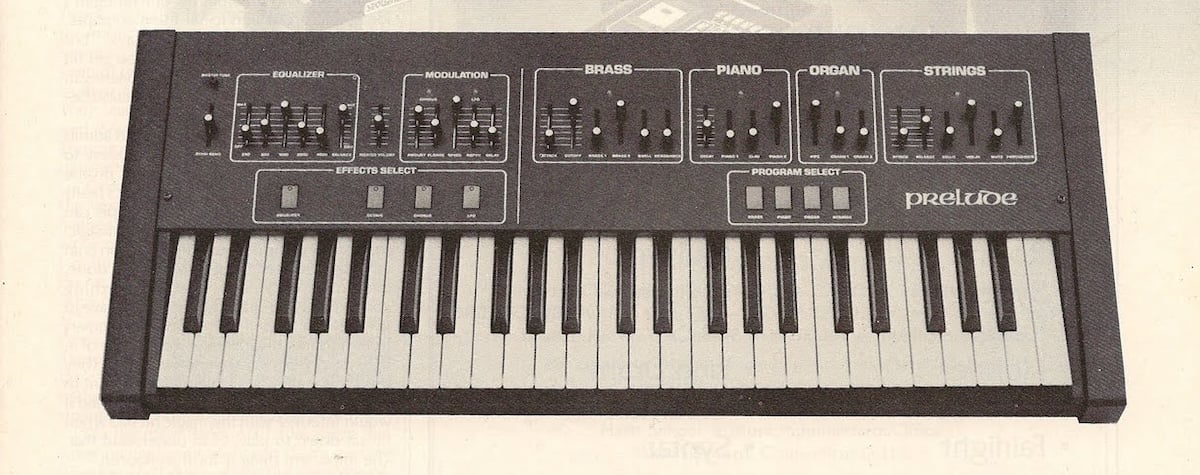
Many users think the string section is the most appealing feature in the Prelude. The effects serve to further enhance its sound, allowing users to step beyond conventional orchestral tones. It looks like an early '80s synth—sleek and uncluttered. It might be more of a one-trick-pony than not, but the trick it does is pretty great.
Six-Trak
[Above: a positively rad modern-day demo of the Six-Trak by Jorb, whose YouTube channel you should definitely check out]
One of the earliest multitimbral synths, the Six-Trak from 1984 was designed as a beginner model—but a lot is going on under the hood. Sadly, programming the Six-Trak isn’t especially intuitive, as it was assumed that most users would stick with the basic preset sounds.
It’s all analog, with six voices and six oscillators. There are two modes, polyphonic and unison. With all six voices engaged in unison mode users can access thick, chewy tones. Its fairly simple design offers complex sounds thanks to the oscillators and cross modulation. The VCA only has standard control over the ADSR envelope curve, and the filter is 24dB octave low pass with an ADSR envelope. Regrettably, likely as a cost-saving measure, the SixTrak only included one control knob—and you have to select what parameter it adjusts. All in all, it's not the easiest editing experience.
The Six-Trak was one of the first instruments to support MIDI, which Dave Smith (founder of Sequential Circuits) helped to design. Because MIDI was so new, including it in their designs helped the company stay one step ahead of their competitors. Each voice can be assigned to a different MIDI channel. This was a pioneering feature and made the unit just as useful for live work as it was recording. The six-channel onboard sequencer was also a revolutionary feature when it came out in the mid-1980s.
Ultimately, though, the Six-Trak was limited instrument, with a short attack for percussive sounds, underpowered modulation opportunities, and zero built-in effects—which would have been nice to thicken up some of the thin sounds of the polyphonic mode. But it’s still a unique beginner synth with some useful features found in more advanced models.
Max
Max is one of the most unique and peculiar synths in the history of Sequential Circuits. It has a lot going for it, but from a modern perspective, it falls short in a lot of ways. It’s multitimbral, with six voices, oscillators, and VCFs.
The construction quality leaves a lot to be desired. It’s made from plastic parts, and the only way to edit sounds is to connect to an external software editor or computer. A lack of real-time performance controls means it’s more or less a set-it-and-forget-it instrument—there aren't even any pitch or modulation wheels!

The preset sounds err toward the basic side. It covers the orchestral bases, and the analog design does offer some cool sounds, even if you have to dig a little bit to get to them. VCF, VCA, and VCO sections all have separate envelope generators, and the LFO can control any of the three. Keeping with Sequential Circuits’ design tradition, two individual 6-track onboard sequencers run in real-time and can record up to 500 notes and two songs.
While there’s been a boom in interest in vintage synths, it’s more than safe to say the Max is outdated. The only way to edit sounds is through the Model 920 software on a relic Commodore 64 computer or through MOTU’s Unisyn software editor. Without going through external software, the only sounds users can use come from the 80 presets and the 20 user patches that a previous owner may have programmed. Specs for the sequencer significantly expand by using the Model 920 software. Note capacity expands from 500 to a whopping 3,400.
The Max was a sign of the synth times in 1984, when manufacturers were taking some pretty big design leaps that, in retrospect, have not withstood the test of time. It’s unfortunate that the Six-Trak and Multi-Trak are so much better standalone units, but the Max isn’t without its appeal…no matter how esoteric it is.
Multi-Trak
This was one of the most full-featured Sequential Circuits synths. To keep up with the features users demanded at the time, the company used the Six-Trak as a template and expanded basically every feature. They kept the six voices and improved the filtering, envelopes, modulation, and sequencer. Programming was moved to buttons on a matrix keypad to assign control parameters to a rotary knob like in the Six-Trak. The only dedicated knobs adjust the volume and speed of the sequencer, chorus effect, and master tuning and volume.
Ninety-nine patches allow sounds to be stored, and the arpeggiator has hold and transpose functions. But the real magic in the MultiTrak is the sequencer, which was one of the most advanced in a synth when it was released in 1985.
It stored up to four polyphonic sequences, with a memory of 1,600 notes, overdubbing and quantizing, and individual track volume and speed controls. Sequences can be chained together; patches can be changed and sequences can be recorded in real time. But it doesn’t stop there. It also includes MIDI I/O, a separate output for each voice, stereo output, built-in chorus, and a 5-octave velocity sensitive keyboard with split/layer modes.
The Multi-Trak wasn’t cheap: it originally retailed for $1,500, but you can often find them for lower prices today.
Split-8
Also produced in 1985, this programmable analog synth has total MIDI implementation. Its eight voices run on Curtis 3394 "synthesizer-on-a-chip" integrated circuits. The biggest thing holding it back was that Sequential Circuits retained the single control knob and parameter assignment. This limits its use for live performance, but isn’t such a drawback in the recording studio.
The keyboard has 61 keys with split and layering, along with 64 internal memory slots. The oscillators can do triangle, square, and sawtooth waves, and voices can be divided in different ways. You can select between eight voices with a single oscillator for each, four voices with dual oscillators each, or a unison mode—a thick 8-voice solo mode with deep lows and melodic leads.
Similarly to the better-known Roland Juno-106, the Split-8 has a lush chorus to add shimmer. Compared to the Juno, the Split-8’s sounds are thinner overall, but true to the sounds Sequential Circuits was cultivating for years. Aesthetically, it’s one of the most ergonomic models in the Sequential Circuits lineup. Wooden side panels give a nice vintage vibe, and the layout is clean with the control buttons and jog wheels located above the keybed—not surprising considering how competitive the synth market was in the mid-1980s.
Studio 440
The most modern of the non-Prophet models, the Studio 440 is more akin to the sequencing machines that were popular in the mid-'80s like those from Akai and E-mu. And it might be the most unusual of any Sequential Circuits model. It’s a combination drum machine and sequencer that was capable of creating fairly complex beats for 1986.
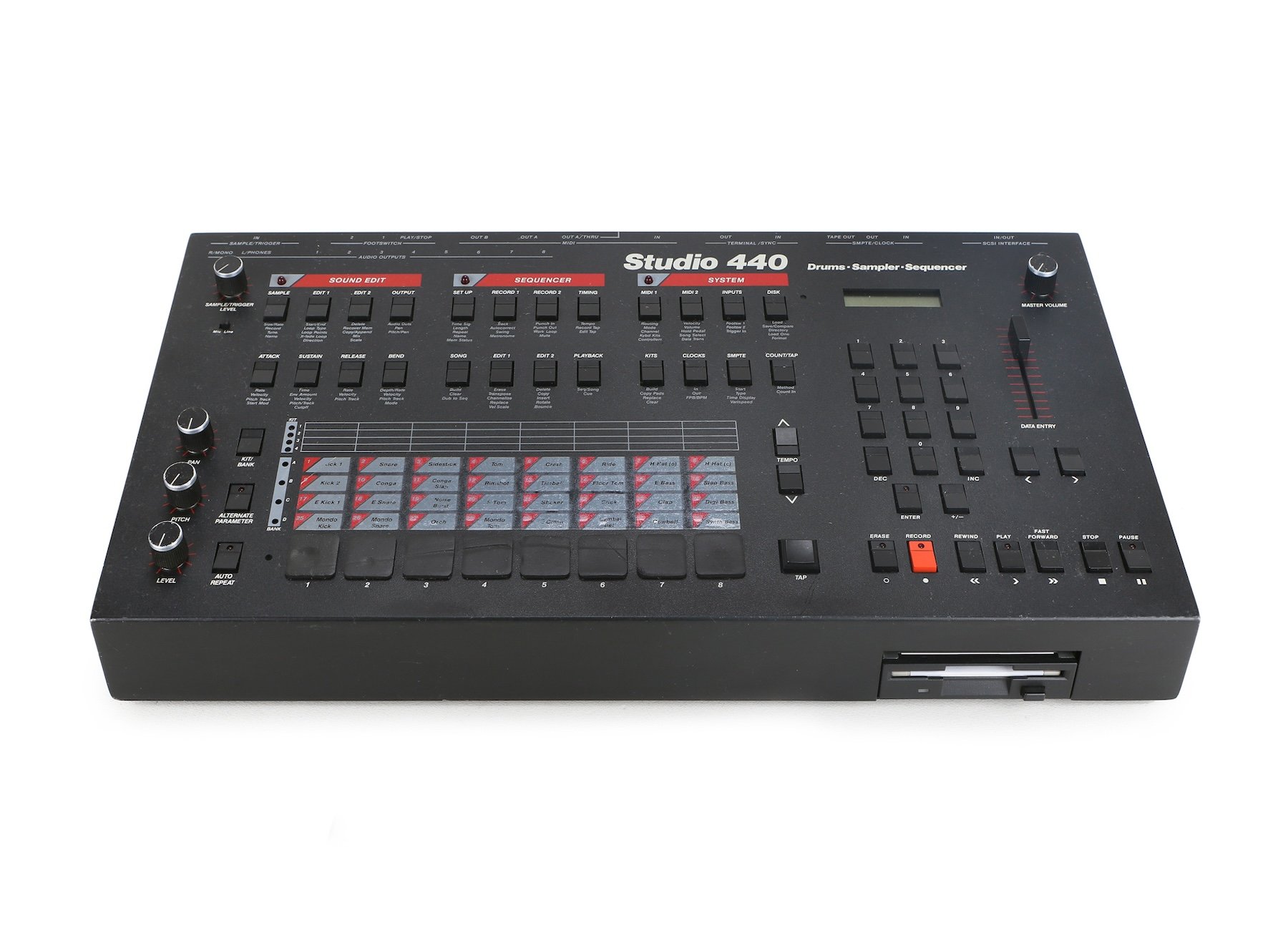
It’s simple, easy to use, and surprisingly overlooked. Like some other samplers of the day, the 440 only has 12-bit sampling, so it’s a little lo-fi—but that can be desirable, and you can do a lot with it. There is MIDI out, and while the onboard memory is small the SCSI connects to external storage.
It was popular with electronic and hip-hop producers thanks to the user-friendly design sample sounds perfect for the time. They still command high value, and the vintage vibe is undeniable.
Legacy
Sequential Circuits released their last product—the Prophet 3000—in 1987. A few dozen units were built before the company closed up shop. Founder Dave Smith said one of the reasons was the industry’s decision to move increasingly toward digital audio. They were bought out by Yamaha, but didn’t release any more instruments under the Sequential Circuits name before they shut down for good in 1989. A number of the people on the team, including Smith, moved to rival Korg.
Eventually, Smith returned to hardware synthesizer design under his own name: Dave Smith Instruments. DSI led the charge as analog synthesizers began to return to the spotlight in the 2000s and 2010s, releasing many influential instruments like the Evolver, Mopho, Prophet 08, Pro-2, Prophet-12, Tempest, and others.
In 2015, Yamaha returned the brand to Smith, who rebranded existing DSI products as Sequential. In the years since, Sequential has released new Prophet models and updated versions of some popular units from the past. In 2021, Sequential was bought again, this time by British audio technology company Focusrite. Dave Smith passed away in 2022, but Sequential continues to operate and produce forward-thinking, great-sounding instruments.
Their original heyday was in the 1980s, but the new version of the brand is forging ahead once again, defining the standard to which modern instruments are held.
Summary
Sequential Circuits established themselves as a leader in music technology early on. The Prophet series is by far their most popular, and their other models might not have been as influential, but they were experimental and pushed boundaries during a crowded time in synthesizer and sequencing technology.
Their gear had more complex MIDI integration than other manufacturers’ thanks to founder Dave Smith being one of the key developers of the standard. Most of their products were quirky, esoteric or just plain weird—and that was the point.

